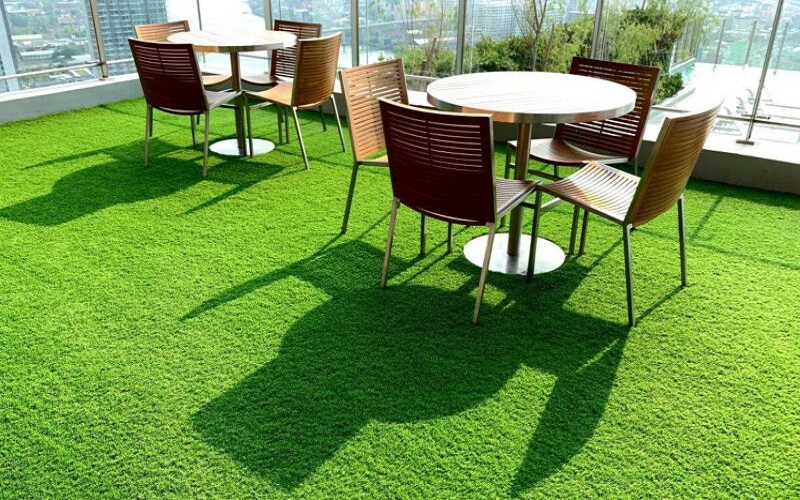When choosing turf for dogs, one of the most important factors to consider is its long-term durability. Synthetic lawns have become a popular alternative to natural grass due to their ability to maintain a lush, green appearance year-round with minimal maintenance. However, many homeowners and property managers wonder about the longevity of synthetic lawns and what they can expect in terms of wear and tear over time. Understanding the factors that contribute to the durability of synthetic lawns can help you make an informed decision and ensure that your investment lasts for many years.
Quality of Materials and Manufacturing
The durability of turf for dogs largely depends on the quality of materials used in their construction and the manufacturing process. High-quality synthetic lawns are typically made from robust materials such as polyethylene, polypropylene, or nylon, which are designed to withstand heavy use and resist wear. These materials are often UV stabilized to prevent fading and degradation from prolonged exposure to sunlight, ensuring that the synthetic lawn retains its vibrant color over time. Additionally, the manufacturing process plays a critical role in durability. Well-made synthetic lawns are constructed with strong backing materials and tuft binding, which secures the fibers in place and prevents them from coming loose. By investing in a high-quality synthetic lawn, you can ensure that it will stand up to the elements and daily use, providing you with a long-lasting, beautiful outdoor space.
Resistance to Weather and Environmental Factors
Pet friendly turfis designed to withstand a variety of weather conditions, making them a durable choice for different climates. Unlike natural grass, which can be damaged by extreme temperatures, heavy rainfall, or drought, synthetic lawns remain unaffected by these environmental factors. The materials used in synthetic lawns are resistant to UV radiation, meaning they won’t fade or become brittle under intense sunlight. Additionally, synthetic lawns are not susceptible to water damage, mold, or mildew, even in areas with high humidity or frequent rain. This resilience ensures that the lawn maintains its appearance and functionality regardless of the weather, making it an ideal option for regions with unpredictable or harsh climates. By choosing a synthetic lawn, you can enjoy a beautiful, low-maintenance landscape that stands up to the elements year after year.
Performance Under Heavy Use and Foot Traffic
One of the key considerations for any landscaping material is how well it performs under heavy use and foot traffic. Synthetic lawns are specifically designed to handle high levels of activity, making them an excellent choice for families with children, pet owners, or properties that host frequent gatherings. The fibers in synthetic lawns are engineered to be flexible yet resilient, allowing them to bend under pressure and bounce back to their original shape without becoming flattened or damaged. This characteristic, known as “memory,” helps the synthetic lawn maintain its lush, full appearance even after years of use. Additionally, the sturdy backing of synthetic lawns provides stability and prevents shifting or movement, ensuring that the surface remains safe and even. With proper care and maintenance, a synthetic lawn can provide a durable, attractive surface that accommodates all types of activities without showing signs of wear.
Maintenance Practices to Prolong Lifespan
While synthetic lawns are inherently low-maintenance, proper care is essential to maximizing their longevity. Regularly removing debris, such as leaves, twigs, and dirt, helps prevent the buildup of organic matter that can lead to mold or bacteria growth. Brushing the synthetic lawn periodically helps keep the fibers upright and prevents matting, maintaining a natural, lush appearance. It’s also important to address any spills or stains promptly, using mild soap and water to prevent permanent discoloration. In areas with pets, cleaning up waste and rinsing the synthetic lawn regularly can help prevent odors and keep the surface hygienic. By following these simple maintenance practices, you can ensure that your synthetic lawn remains in excellent condition for many years, providing a beautiful, durable landscape solution that stands the test of time.
Conclusion
Synthetic lawns offer a durable, long-lasting alternative to natural grass, providing homeowners and property managers with a low-maintenance, attractive surface that withstands the challenges of weather, heavy use, and time. By choosing pet friendly turf and following proper maintenance practices, you can enjoy the benefits of a lush, green landscape without the hassle of traditional lawn care. The resilience of synthetic lawns in various conditions, from intense sunlight to heavy foot traffic, makes them a reliable choice for anyone looking to create a beautiful, sustainable outdoor space. With the right investment and care, synthetic lawns can provide years of enjoyment, adding value and aesthetic appeal to any property.

